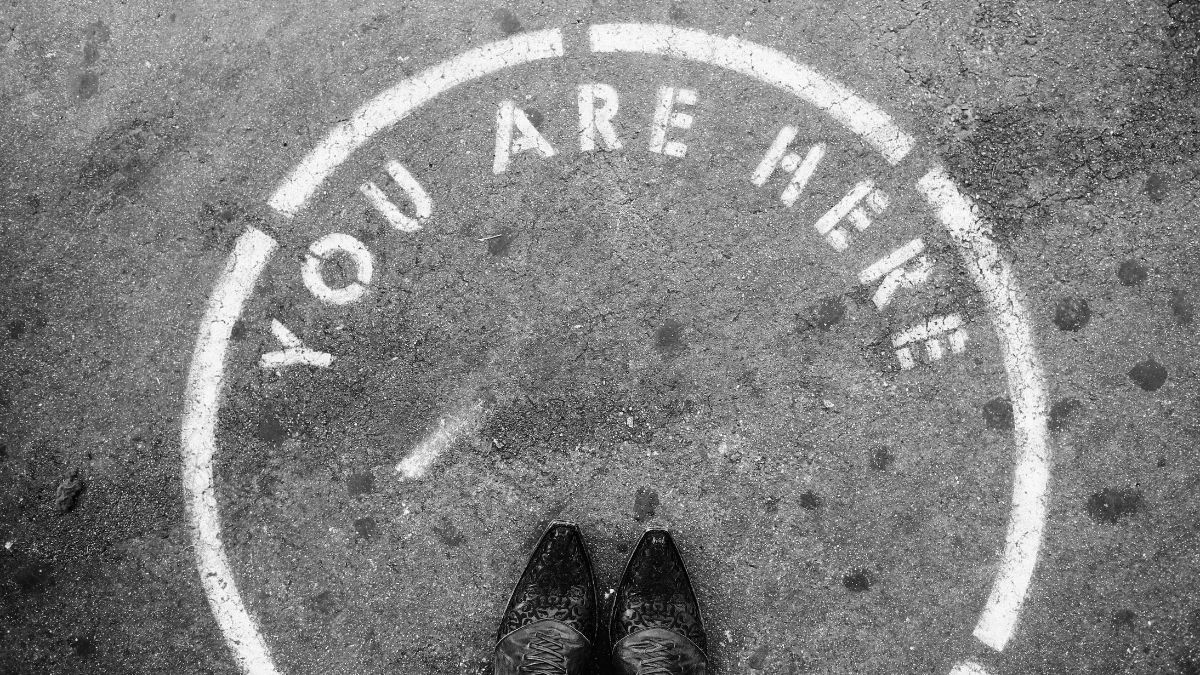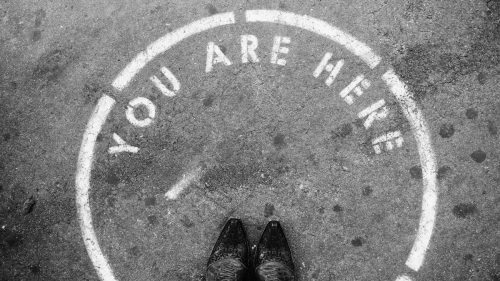

BreakPoint
It turns out that a famous portrait of four little girls is really a representation of sexism, slavery, and oppression in general. A religious and deeply moral artist was secretly obsessed with cross-dressing and conflicted about his own gender, as you can tell just by looking at his work. And a simple painting of a man in a boat, surrounded by sharks, is filled with symbols of everything from racism to misogyny to castration.*
If any of these statements sound familiar to you, you have probably been reading contemporary art criticism. That's what Roger Kimball, himself an art critic, explains in his new book, The Rape of the Masters: How Political Correctness Sabotages Art.
Kimball writes that many of his fellow critics "do an enormous amount of damage by institutionalizing both an attack on art and [a negative] attitude toward cultural achievement. The attack proceeds partly by displacing art with politics of one stripe or another, partly by diffusing an atmosphere of smug trashiness. The attitude towards cultural achievement is one of barely concealed hostility." With such an attitude permeating the art world, it's no wonder so many people have decided that art just isn't relevant to their lives.
By contrast, in his readable and highly enjoyable book, Kimball skewers the critics' approach. He dryly notes at the beginning, "As I was writing this book, I passed around draft chapters . . . to various friends. The question I was asked most often was 'Are you making this up?'"
Sad to say, he wasn't. For instance, as Kimball recounts, Professor Michael Fried of Johns Hopkins University really did look at a hunting scene, painted by Gustave Courbet, and see a dramatization of "the Freudian notion of castration."**
"What is it about castration and art critics, anyway?" asks an exasperated Kimball.
But Kimball goes on to examine the reasons behind these ludicrous misinterpretations, and what he finds is a desperate need to interpret everything through personal ideology. He quotes art historian Keith Moxey of Barnard College and Columbia University, who said, "Historical arguments will be evaluated according to how well they coincide with our political convictions and cultural attitudes." Well.
What is the connection between art and politics? Kimball speculates that critics and professors like Moxey are searching for significance. He writes, "The pleasures afforded by purely aesthetic experience are essentially thirsty pleasures, which by their very nature crave satisfaction in another, less worldly realm." So these people try to find deeper meanings in everything they see; deeper meanings that just happen to fit with the way they view the world: politically.
Kimball implores his readers to take a distinctly different approach to art: Simply "look and see."
There is great significance in art, but it can't be found by twisting artistic works to fit political ideologies. Art communicates the worldview of the artist, how he or she understands reality. Great art will communicate reality as it is: both the reality of God's love and the beauty of His creation -- and the ways in which we've sometimes desecrated that creation. Art teaches truths we cannot comprehend if we're too busy theorizing about cross-dressing and misogyny.
For further reading and information:
* These descriptions refer to The Daughters of Edward Darley Boit (1882) by John Singer Sargent; Drunken Silenus (1618) by Peter Paul Rubens; and The Gulf Stream (1899) by Winslow Homer.
** This refers to The Quarry (1856) by Jean Desiree Gustav Courbet.
Roger Kimball, The Rape of the Masters: How Political Correctness Sabotages Art (Encounter Books, 2004).
Roger Kimball, "The rape of the masters," New Criterion, December 2003. This article is based on Kimball's book.
John J. Miller, "The Rape of the Masters," an interview with Roger Kimball, National Review Online, 20 July 2004.
See also this First Voice interview with Roger Kimball.
"A Conversation with Dana Gioia," Response, summer 2004. Dana Gioia is the current chairman of the National Endowment for the Arts.
Voice Behind is a community for artists in the Washington, D.C., area, whose vision is "a creative renaissance that illumines the good, the true, and the beautiful through excellence and artistry for the glory of God, the service of neighbor, and the renewal of culture."
Arthur C. Danto, The Abuse of Beauty: Aesthetics and the Concept of Art (Open Court, 2003.)
Jerry L. Eisley, "Is Art Dead or Just Missing?" Findings 2, no. 2 (Winter 2002/2003), The Wilberforce Forum.
Look and See
It turns out that a famous portrait of four little girls is really a representation of sexism, slavery, and oppression in general. A religious and deeply moral artist was secretly obsessed with cross-dressing and conflicted about his own gender, as you can tell just by looking at his work. And a simple painting of a man in a boat, surrounded by sharks, is filled with symbols of everything from racism to misogyny to castration.*
If any of these statements sound familiar to you, you have probably been reading contemporary art criticism. That's what Roger Kimball, himself an art critic, explains in his new book, The Rape of the Masters: How Political Correctness Sabotages Art.
Kimball writes that many of his fellow critics "do an enormous amount of damage by institutionalizing both an attack on art and [a negative] attitude toward cultural achievement. The attack proceeds partly by displacing art with politics of one stripe or another, partly by diffusing an atmosphere of smug trashiness. The attitude towards cultural achievement is one of barely concealed hostility." With such an attitude permeating the art world, it's no wonder so many people have decided that art just isn't relevant to their lives.
By contrast, in his readable and highly enjoyable book, Kimball skewers the critics' approach. He dryly notes at the beginning, "As I was writing this book, I passed around draft chapters . . . to various friends. The question I was asked most often was 'Are you making this up?'"
Sad to say, he wasn't. For instance, as Kimball recounts, Professor Michael Fried of Johns Hopkins University really did look at a hunting scene, painted by Gustave Courbet, and see a dramatization of "the Freudian notion of castration."**
"What is it about castration and art critics, anyway?" asks an exasperated Kimball.
But Kimball goes on to examine the reasons behind these ludicrous misinterpretations, and what he finds is a desperate need to interpret everything through personal ideology. He quotes art historian Keith Moxey of Barnard College and Columbia University, who said, "Historical arguments will be evaluated according to how well they coincide with our political convictions and cultural attitudes." Well.
What is the connection between art and politics? Kimball speculates that critics and professors like Moxey are searching for significance. He writes, "The pleasures afforded by purely aesthetic experience are essentially thirsty pleasures, which by their very nature crave satisfaction in another, less worldly realm." So these people try to find deeper meanings in everything they see; deeper meanings that just happen to fit with the way they view the world: politically.
Kimball implores his readers to take a distinctly different approach to art: Simply "look and see."
There is great significance in art, but it can't be found by twisting artistic works to fit political ideologies. Art communicates the worldview of the artist, how he or she understands reality. Great art will communicate reality as it is: both the reality of God's love and the beauty of His creation -- and the ways in which we've sometimes desecrated that creation. Art teaches truths we cannot comprehend if we're too busy theorizing about cross-dressing and misogyny.
For further reading and information:
* These descriptions refer to The Daughters of Edward Darley Boit (1882) by John Singer Sargent; Drunken Silenus (1618) by Peter Paul Rubens; and The Gulf Stream (1899) by Winslow Homer.
** This refers to The Quarry (1856) by Jean Desiree Gustav Courbet.
Roger Kimball, The Rape of the Masters: How Political Correctness Sabotages Art (Encounter Books, 2004).
Roger Kimball, "The rape of the masters," New Criterion, December 2003. This article is based on Kimball's book.
John J. Miller, "The Rape of the Masters," an interview with Roger Kimball, National Review Online, 20 July 2004.
See also this First Voice interview with Roger Kimball.
"A Conversation with Dana Gioia," Response, summer 2004. Dana Gioia is the current chairman of the National Endowment for the Arts.
Voice Behind is a community for artists in the Washington, D.C., area, whose vision is "a creative renaissance that illumines the good, the true, and the beautiful through excellence and artistry for the glory of God, the service of neighbor, and the renewal of culture."
Arthur C. Danto, The Abuse of Beauty: Aesthetics and the Concept of Art (Open Court, 2003.)
Jerry L. Eisley, "Is Art Dead or Just Missing?" Findings 2, no. 2 (Winter 2002/2003), The Wilberforce Forum.
- S. Lewis, An Experiment in Criticism(Cambridge University Press, 1992 edition).
Dave Barry, "Armchair Critic," Washington Post, 25 January 2004.
"Cleaner trashes Tate artwork," ABC News, 27 August 2004.
09/30/04















